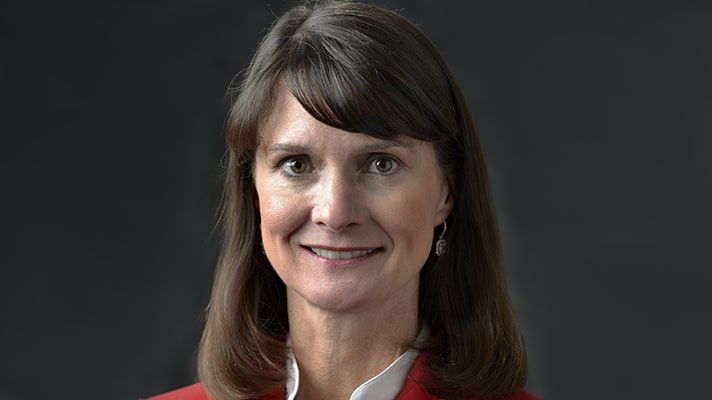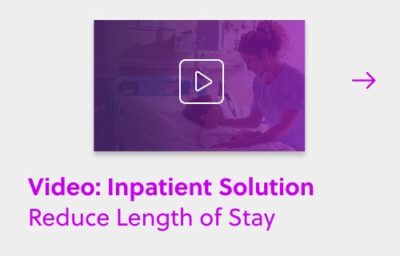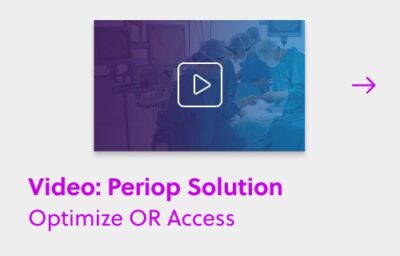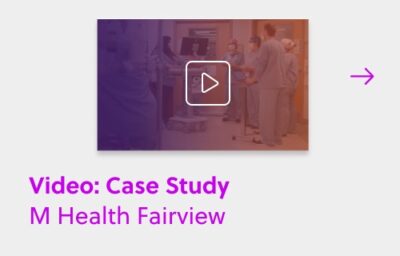
Cheryl Reinking, chief nursing officer of El Camino Hospital, has experienced a lot of innovation and change in her 29 years at the hospital. She is responsible for clinical care quality, workforce management and patient experience in all areas of nursing, laboratory, pharmacy and respiratory. As part of our exploration series of the practical applications of AI in healthcare, we chatted with Reinking to talk about how AI and other technologies have impacted hospital operations.
- What technology trends have had the most impact atEl Camino Hospital?
Cheryl Reinking: You can’t talk about technology trends without talking about Electronic Health Records (EHRs). At El Camino Hospital, we believe we’re one of the first to have an electronic health record system. In partnership with Lockheed, El Camino Hospital implemented the world’s first computer-aided medical information system in 1971. We used it for 34 years. Nurses used the system to enter their documentation. The notion of having such a focus on innovative programs was one of the things that attracted me to El Camino Hospital. We upgraded our system to Allscripts in 20016 and have since converted to EPIC in2015. The EHR impacts so many users. It has the ability to ingest and analyze as much data as we give it. But it’s difficult to know what data in the EHR will be most important to our patients at any given moment. Qventus is helping us get that info insight from that data in real time, when it can actual impact the patient experience.
- What has been the biggest challenge for deploying technology?
CR: The biggest challenge is having the staff understand the benefits of using a new technology. Because we have the tradition of being early adopters, our staff are pretty accepting of new technology. But what they don’t want to do is use technology that hampers them in doing what’s best for patients or takes away time from patients. To achieve change we have to help them understand why new technology is important and how it benefits our patients. That is really the key to gaining acceptance and adoption with our staff.
- What has been the most positive impact technology has had on the way you practice and provide care?
CR: The most positive thing is just the information availability, whether that be in the EHR or in many of our other data systems. Information that used to just go away or disappear into a “system” is now available to us. Where we are now, though, is that there’s so much data and we’re trying to discern the most valuable pieces of data to inform process.
- When you look ahead, what technologies show the most promise for supporting care goals
CR: Predictive analyticsand AI tools are the future. AI won’t replace doctors or nurses or other care providers because there are so many complexities to care. But for us it would be an adjunctive tool to make the patient care experience better. We, as an industry, have enough data that we can develop more rigorous predictive models to help scale our resources. We must pay attention to affordability and the cost of healthcare and be able to put resources where they’re most valuably. Having data to support that high value proposition for guiding resources is so important for the future of healthcare.
- Where do you see the potential of AI? What care paths or applications make the most sense for AI right now
CR: There are lots of opportunities to use AI to adjust care plans for patients and medication protocols. Readmissions is a huge challenge, as is length of stay. Those are some of the really big initiatives El Camino Hospital is working on. We’re doing our best to predict which patients are most likely to come back and to try to scale our resources to address that. We’re really trying to focus our energies and resources on those areas that need it most. A few years ago, we had a problem with our fall rate. That’s very concerning to us, as falls can be devastating whether or not there’s an injury. If there’s a suspected injury, the patient might need a radiological exam, and then they’re exposed to radiation. We’d like to be able to predict a little more in advance which patients are most at risk for falls. We talked with Qventus on how to look at some of our existing systems that produce data to predict which patients are most at-risk. Patient conditions change over time while they’re in the hospital based on what medications they’re getting and what procedures they’ve had. Machine learning takes information from our call light system and other factors that might be associated with fall risk; when certain thresholds are met using that data, notifications are sent to nurses telling them that a patient is at their highest risk for falling. There has been a 39 percent decrease in falls after we implemented this as part of a comprehensive fall intervention initiative.
- What insight do you want to share with peers considering AI
CR: Artificial Intelligence is here now. We thought of it as a futuristic tool that wasn’t really available to healthcare, but it is. Our systems have lots of data to mine, and that really can help us improve care. Don’t be afraid to look at AI. It’s not out there in the future, it’s right here, available to help us today.


